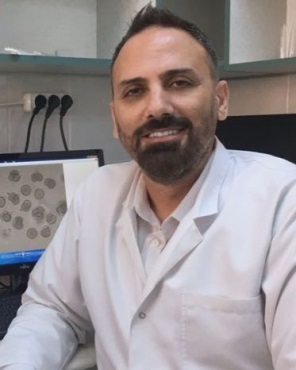Guest Editors

Prof. Dr. Ozge Çevik, Department of Medical Biochemistry, School of Medicine, Aydın Adnan Menderes University, Aydın, Turkey. E-mail: ozge.cevik@adu.edu.tr

Assoc. Prof. Dr. Ismail Sari, Department of Medical Biochemistry, School of Medicine, Nigde Omer Halisdemir University, Nigde, Turkey. E-mail: smlsr@hotmail.com

Asst. Prof. Dr. Erkan Gumus, Department of Histology and Embryology, School of Medicine, Aydın Adnan Menderes University, Aydın, Turkey. E-mail:erkangumus@yahoo.com
Summary
Health is defined as "the harmonious work of thousands of biochemical reactions and processes that occur in normal cells to maintain homeostasis." Disruption of these processes or reactions and/or failure to progress in harmony can lead to diseases. The continuity of health also depends on the unchanged expression of the genes involved in these biochemical transformations and processes, in other words, to remain the same. Although the chemical and molecular structure of DNA is understood, thanks to the findings obtained in the epigenetic field in recent years, it is understood that not everything is dependent on DNA in biological processes and diseases. Epigenetic changes that occur without causing a change in the base sequence in DNA play an essential role in regulating of the expression of a gene. Therefore, it is inevitable that epigenetic changes affect biochemical processes. Thus, epigenetic and biochemical changes are closely interrelated, and thanks to the developments in epigenetics and biochemistry in recent years, we now have more information about developmental biology and pathogenesis of many diseases.
The current special issue will focus on Biochemical and Epigenetic changes in development and diseases, therapies, and their relationship. We welcome investigators in relevant fields to contribute research articles, reviews, perspectives, and commentaries, describing recent findings which use advanced molecular biological and biochemical techniques. Potential topics include but are not limited to the followings:
-Changes in epigenetic mechanisms in development and disease and their importance
-Researches (especially pathway-based studies) that examine changes in biochemical processes in disease and development
-Studies examining the pathogenesis of diseases based on lipidomics, proteomics, and genomics approaches
-Studies revealing the connection between epigenetic mechanisms and biochemical processes in development and disease
-Studies on therapies used in the treatment of diseases
Keywords
Epigenetics, Biochemical Pathway, Developmental Biology, Lipidomics, Proteomics, Genomics, Biochemical Basis Of Disease, Therapies
Published Papers